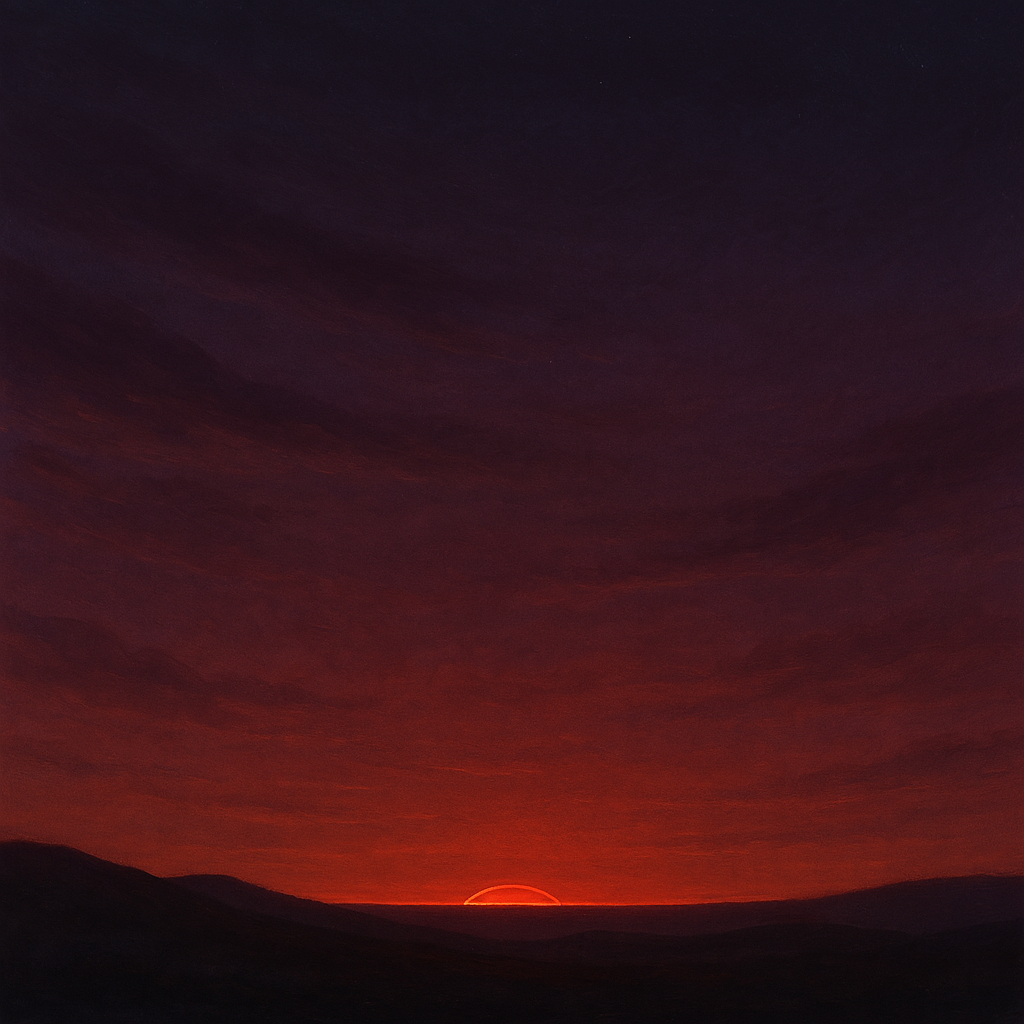The Silent Glow of the Frost Sky
Atmosphere of Thaldris
Density and Structure
Thaldris’ high gravity pulls gas molecules in with particular strength, resulting in an atmosphere that is denser and compact. Instead of extending far into the sky, the atmosphere remains confined to a relatively low layer close to the ground. Cold temperatures further limit the expansion of the air.
This combination creates a compressed, “low” atmosphere in which clouds, fog, and auroras appear in narrow, clearly visible horizontal bands. The atmosphere is not thin, but its vertical reach is limited—a defining feature of the icy world of Thaldris.
This combination creates a compressed, “low” atmosphere in which clouds, fog, and auroras appear in narrow, clearly visible horizontal bands. The atmosphere is not thin, but its vertical reach is limited—a defining feature of the icy world of Thaldris.
Lights in the Darkness
Although there are times on Thaldris when even daytime is nearly swallowed by darkness, lights still appear in the sky. "Especially during this season of deep darkness — known as Frostagond — these celestial lights appear with particular intensity.
Colorful Twilights
When Skalrun is hidden behind Solvindir and Solvindir herself no longer rises above the horizon, appearing only as a narrow band of light, an unusually long twilight begins. Solvindir appears late in the day, barely a hand’s breadth above the horizon—as if she were hiding behind Thaldris and peeking out cautiously.
She is visible for only a few hours (a maximum of three at her lowest position), and during this time the sky does not turn blue, but instead glows in deep red-orange, blazing violet, or muted lilac. Depending on how high or low Solvindir rises or sinks in her cycle, the color palette shifts continuously.
When she reaches her highest point of the year—fully visible—the colorful twilight once again becomes limited to morning and evening hours.
She is visible for only a few hours (a maximum of three at her lowest position), and during this time the sky does not turn blue, but instead glows in deep red-orange, blazing violet, or muted lilac. Depending on how high or low Solvindir rises or sinks in her cycle, the color palette shifts continuously.
When she reaches her highest point of the year—fully visible—the colorful twilight once again becomes limited to morning and evening hours.
Auroras
Due to Thaldris’ strong magnetic field and its clear, low atmosphere, band-like auroras frequently appear: greenish shimmering veils that stretch majestically across the night sky. In rare cases, vertical beams of light appear, known in ancient lore as shard signs.
At certain times, the green of the auroras is streaked with red or violet hues—an occurrence for which no known explanation exists. During Frostagond, the dark season, the auroras are especially striking, often serving as the only source of light besides the stars and occasionally visible moons. Unlike fleeting sky phenomena, they often linger for one to two hours—a quiet, luminous spectacle above the frozen world.
At certain times, the green of the auroras is streaked with red or violet hues—an occurrence for which no known explanation exists. During Frostagond, the dark season, the auroras are especially striking, often serving as the only source of light besides the stars and occasionally visible moons. Unlike fleeting sky phenomena, they often linger for one to two hours—a quiet, luminous spectacle above the frozen world.
The Broken / Double Eye
On clear days with high ice veils, it can happen: a wide halo forms around Solvindir, stretched flat, nearly circling the horizon. If Skarlun stands at the right angle above her path, the small sun cuts through the large ring of light—and only rarely does a second, steeper arc form above it—finer, overlapping. The two circles are neither fully aligned nor completely separate—they merge in the brilliance of the sky.
The Frostborn call this phenomenon the broken or double eye. It appears rarely, usually during transitional times—when Solvindir is setting while Skarlun is still rising or just about to sink behind her. The phenomenon is typically visible for 20 to 90 minutes, depending on atmospheric clarity and stable ice layers. In favorable conditions, it can linger for up to two hours, but even the slightest turbulence often causes it to vanish quickly.
The Frostborn call this phenomenon the broken or double eye. It appears rarely, usually during transitional times—when Solvindir is setting while Skarlun is still rising or just about to sink behind her. The phenomenon is typically visible for 20 to 90 minutes, depending on atmospheric clarity and stable ice layers. In favorable conditions, it can linger for up to two hours, but even the slightest turbulence often causes it to vanish quickly.
Created by Selibaque 2025




Kommentare